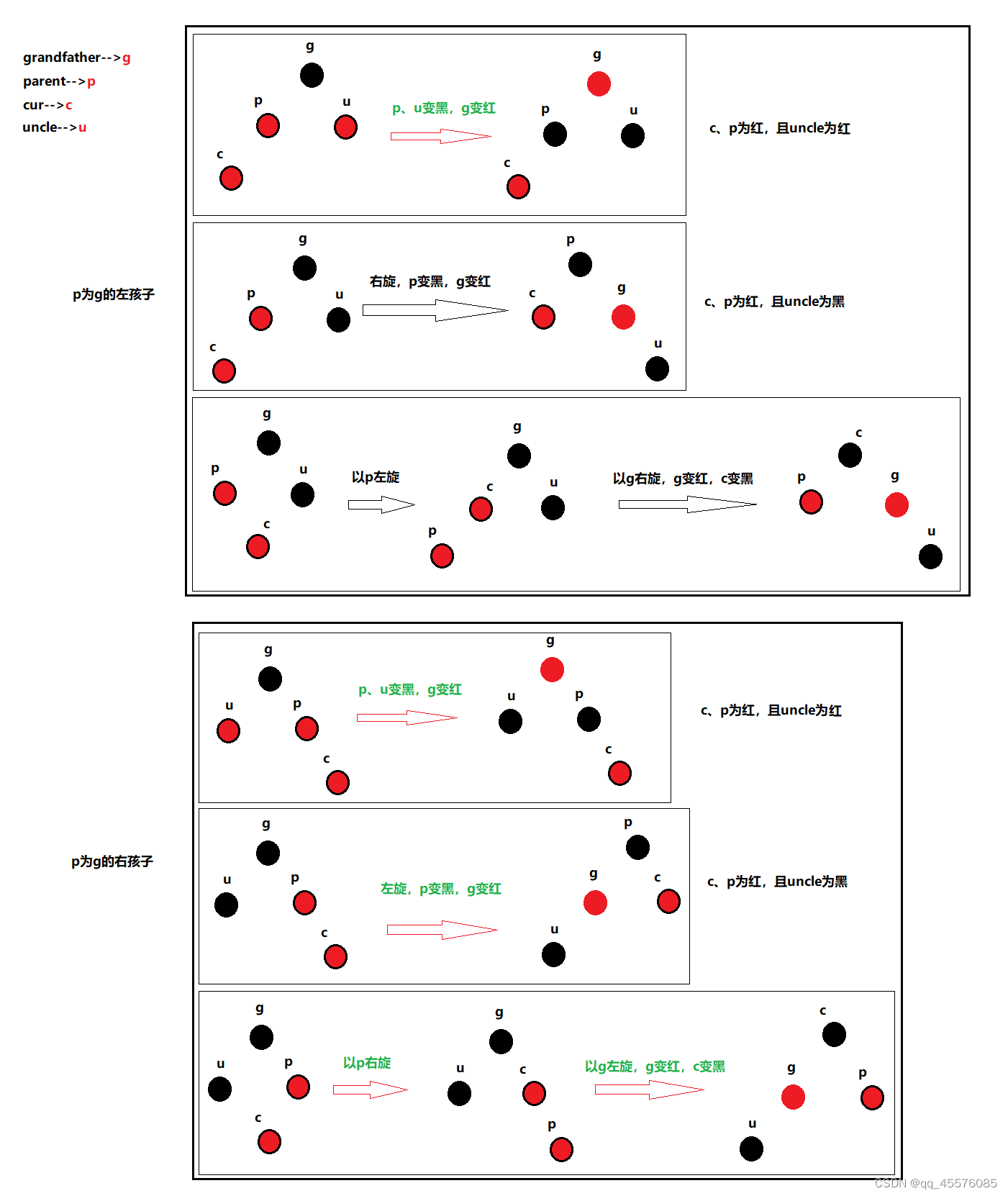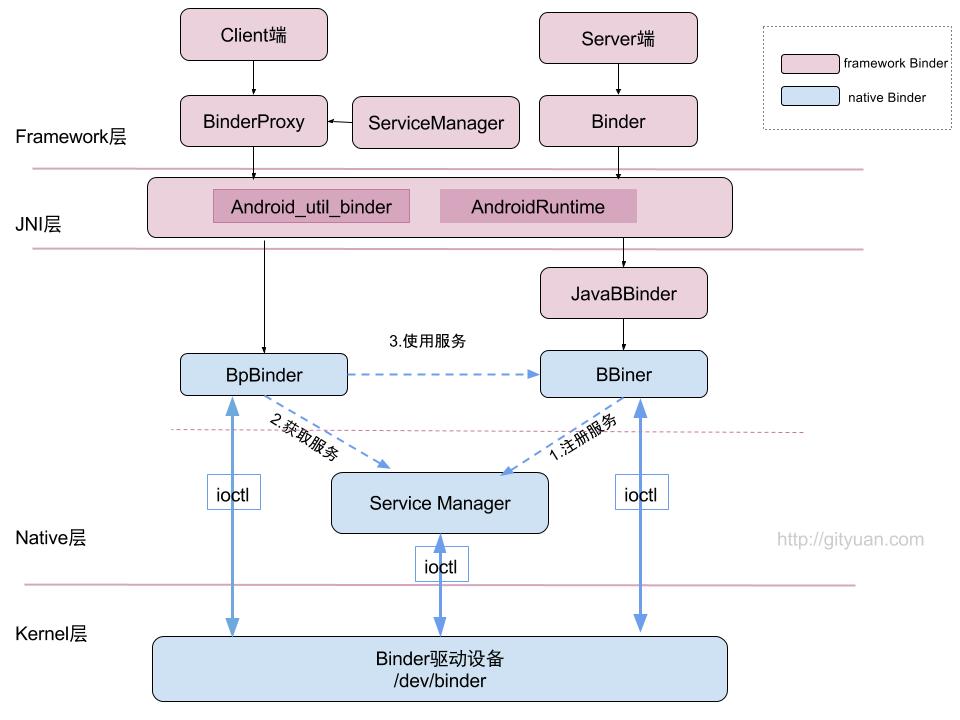
- 图中红色代表整个framework层 binder架构相关组件;
- Binder类代表Server端,BinderProxy类代码Client端;
- 图中蓝色代表Native层Binder架构相关组件;
- 上层framework层的Binder逻辑是建立在Native层架构基础之上的,核心逻辑都是交予Native层方法来处理。
- framework层的ServiceManager类与Native层的功能并不完全对应,framework层的ServiceManager类的实现最终是通过BinderProxy传递给Native层来完成的
一. 注册 jni ,java 可以调用 native 层代码
因为 应用进程均是 zygote fork 出来的子进程,会复制父进程的内存
/frameworks/base/cmds/app_process/app_main.cpp
173 int main(int argc, char* const argv[])
174 {
175 if (!LOG_NDEBUG) {
。。。。
// AppRuntime 实例
185 AppRuntime runtime(argv[0], computeArgBlockSize(argc, argv));
// 看是启动 zygote 、SystemServer 还是普通 application
264 while (i < argc) {
265 const char* arg = argv[i++];
266 if (strcmp(arg, "--zygote") == 0) {
267 zygote = true;
268 niceName = ZYGOTE_NICE_NAME;
269 } else if (strcmp(arg, "--start-system-server") == 0) {
270 startSystemServer = true;
271 } else if (strcmp(arg, "--application") == 0) {
272 application = true;
273 } else if (strncmp(arg, "--nice-name=", 12) == 0) {
274 niceName.setTo(arg + 12);
275 } else if (strncmp(arg, "--", 2) != 0) {
276 className.setTo(arg);
277 break;
278 } else {
279 --i;
280 break;
281 }
282 }
283
。。。。。。。
335 if (zygote) {
336 runtime.start("com.android.internal.os.ZygoteInit", args, zygote);
337 } else if (className) {
338 runtime.start("com.android.internal.os.RuntimeInit", args, zygote);
AppRuntime start("com.android.internal.os.RuntimeInit", args, zygote) 启动一个普通应用或者zygote,都会注册jni
// AppRuntime 继承了 AndroidRuntime
34 class AppRuntime : public AndroidRuntime
35 {/frameworks/base/core/jni/AndroidRuntime.cpp
void AndroidRuntime::start(const char* className, const Vector<String8>& options, bool zygote)
{
ALOGD(">>>>>> START %s uid %d <<<<<<\n",
className != NULL ? className : "(unknown)", getuid());
static const String8 startSystemServer("start-system-server");
。。。。。
// 开启虚拟机
/* start the virtual machine */
JniInvocation jni_invocation;
jni_invocation.Init(NULL);
JNIEnv* env;
// VM
if (startVm(&mJavaVM, &env, zygote) != 0) {
return;
}
onVmCreated(env);
/*
* Register android functions.
*/
// 注册安卓 jni,让java层可以调用 cpp 代码
if (startReg(env) < 0) {
ALOGE("Unable to register all android natives\n");
return;
}startReg 函数
/*static*/ int AndroidRuntime::startReg(JNIEnv* env)
{
ATRACE_NAME("RegisterAndroidNatives");
androidSetCreateThreadFunc((android_create_thread_fn) javaCreateThreadEtc);
env->PushLocalFrame(200);
// 这里去注册 jni
if (register_jni_procs(gRegJNI, NELEM(gRegJNI), env) < 0) {
env->PopLocalFrame(NULL);
return -1;
}register_jni_procs(gRegJNI, NELEM(gRegJNI), env)
看下:gRegJNI
// RegJNIRec 是个结构体,里面是调用的函数,使用 mProc 表示
// 所以 gRegJNI 是个结构体数组
static const RegJNIRec gRegJNI[] = {
REG_JNI(register_com_android_internal_os_RuntimeInit),
REG_JNI(register_com_android_internal_os_ZygoteInit_nativeZygoteInit),
REG_JNI(register_android_os_SystemClock),
REG_JNI(register_android_util_EventLog),
// 这里注册了 log 机制
REG_JNI(register_android_util_Log),
REG_JNI(register_android_util_MemoryIntArray),
REG_JNI(register_android_util_PathParser),
// 这里就去注册了binder 机制的一些函数
REG_JNI(register_android_os_Binder),
REG_JNI(register_android_os_Parcel),
=========
#ifdef NDEBUG
// REG_JNI 宏定义了函数的名字
#define REG_JNI(name) { name }
struct RegJNIRec {
int (*mProc)(JNIEnv*);
};
所以 gRegJNI 是个结构体数组。NELEM(gRegJNI) 是计算该数组的大小 size
接着调用 register_jni_procs 函数:
static int register_jni_procs(const RegJNIRec array[], size_t count, JNIEnv* env)
{
for (size_t i = 0; i < count; i++) {
// 遍历所有的结构体,调用函数 mProc
if (array[i].mProc(env) < 0) {
#ifndef NDEBUG
ALOGD("----------!!! %s failed to load\n", array[i].mName);
#endif
return -1;
}
}
return 0;
}这里主要关注 register_android_os_Binder 函数
/frameworks/base/core/jni/android_util_Binder.cpp
int register_android_os_Binder(JNIEnv* env)
{
if (int_register_android_os_Binder(env) < 0)
return -1;
if (int_register_android_os_BinderInternal(env) < 0)
return -1;
// 主要看下 int_register_android_os_BinderProxy 函数
if (int_register_android_os_BinderProxy(env) < 0)
return -1;
jclass clazz = FindClassOrDie(env, "android/util/Log");
gLogOffsets.mClass = MakeGlobalRefOrDie(env, clazz);
gLogOffsets.mLogE = GetStaticMethodIDOrDie(env, clazz, "e",
"(Ljava/lang/String;Ljava/lang/String;Ljava/lang/Throwable;)I");
clazz = FindClassOrDie(env, "android/os/ParcelFileDescriptor");
gParcelFileDescriptorOffsets.mClass = MakeGlobalRefOrDie(env, clazz);
gParcelFileDescriptorOffsets.mConstructor = GetMethodIDOrDie(env, clazz, "<init>",
"(Ljava/io/FileDescriptor;)V");主要看下 int_register_android_os_BinderProxy 函数
static int int_register_android_os_BinderProxy(JNIEnv* env)
{
jclass clazz = FindClassOrDie(env, "java/lang/Error");
gErrorOffsets.mClass = MakeGlobalRefOrDie(env, clazz);
// const char* const kBinderProxyPathName = "android/os/BinderProxy";
// 获取 BinderProxy 类
clazz = FindClassOrDie(env, kBinderProxyPathName);
// 设置全局的 mClass 为:BinderProxy
gBinderProxyOffsets.mClass = MakeGlobalRefOrDie(env, clazz);
// BinderProxy 的静态方法 getInstance
gBinderProxyOffsets.mGetInstance = GetStaticMethodIDOrDie(env, clazz, "getInstance",
"(JJ)Landroid/os/BinderProxy;");
// BinderProxy 的静态方法 sendDeathNotice
gBinderProxyOffsets.mSendDeathNotice = GetStaticMethodIDOrDie(env, clazz, "sendDeathNotice",
"(Landroid/os/IBinder$DeathRecipient;)V");
// 设置变量 mNativeData
gBinderProxyOffsets.mNativeData = GetFieldIDOrDie(env, clazz, "mNativeData", "J");
clazz = FindClassOrDie(env, "java/lang/Class");
// getName 方法
gClassOffsets.mGetName = GetMethodIDOrDie(env, clazz, "getName", "()Ljava/lang/String;");
//RegisterMethodsOrDie 方法
return RegisterMethodsOrDie(
env, kBinderProxyPathName,
gBinderProxyMethods, NELEM(gBinderProxyMethods));
}
======
// binderproxy_offsets_t 结构体为如下:
static struct binderproxy_offsets_t
{
// Class state.
jclass mClass;
jmethodID mGetInstance;
jmethodID mSendDeathNotice;
// Object state.
jfieldID mNativeData; // Field holds native pointer to BinderProxyNativeData.
} gBinderProxyOffsets;RegisterMethodsOrDie 方法
return RegisterMethodsOrDie(
env, kBinderProxyPathName,
gBinderProxyMethods, NELEM(gBinderProxyMethods));
// kBinderProxyPathName 为:
const char* const kBinderProxyPathName = "android/os/BinderProxy";
// gBinderProxyMethods 为:
static const JNINativeMethod gBinderProxyMethods[] = {
/* name, signature, funcPtr */
{"pingBinder", "()Z", (void*)android_os_BinderProxy_pingBinder},
{"isBinderAlive", "()Z", (void*)android_os_BinderProxy_isBinderAlive},
{"getInterfaceDescriptor", "()Ljava/lang/String;", (void*)android_os_BinderProxy_getInterfaceDescriptor},
{"transactNative", "(ILandroid/os/Parcel;Landroid/os/Parcel;I)Z", (void*)android_os_BinderProxy_transact},
{"linkToDeath", "(Landroid/os/IBinder$DeathRecipient;I)V", (void*)android_os_BinderProxy_linkToDeath},
{"unlinkToDeath", "(Landroid/os/IBinder$DeathRecipient;I)Z", (void*)android_os_BinderProxy_unlinkToDeath},
{"getNativeFinalizer", "()J", (void*)android_os_BinderProxy_getNativeFinalizer},
};
// NELEM(gBinderProxyMethods) 为数组大小:
sizeof (gBinderProxyMethods) / sizeof(gBinderProxyMethods[0])相当于将 java 层的方法,如gBinderProxyMethods ,映射到 cpp 中代码:android_os_BinderProxy_pingBinder
二. java 层 getIServiceManager 获取servicemanager
以设置 TelephonyRegistry 为例子
/frameworks/base/services/java/com/android/server/SystemServer.java
telephonyRegistry = new TelephonyRegistry(context);
ServiceManager.addService("telephony.registry", telephonyRegistry);TelephonyRegistry 是 ITelephonyRegistry.Stub ,Stub 接口,是服务端的实现。在system 进程创建这个对象,则是运行在系统进程中。
99 public class TelephonyRegistry extends ITelephonyRegistry.Stub {
100 private static final String TAG = "TelephonyRegistry";ServiceManager.addService("telephony.registry", telephonyRegistry)
/frameworks/base/core/java/android/os/ServiceManager.java
@UnsupportedAppUsage
public static void addService(String name, IBinder service) {
addService(name, service, false, IServiceManager.DUMP_FLAG_PRIORITY_DEFAULT);
}
======
@UnsupportedAppUsage
public static void addService(String name, IBinder service, boolean allowIsolated,
int dumpPriority) {
try {
getIServiceManager().addService(name, service, allowIsolated, dumpPriority);
} catch (RemoteException e) {
Log.e(TAG, "error in addService", e);
}
}
==========
private static IServiceManager getIServiceManager() {
if (sServiceManager != null) {
return sServiceManager;
}
// Find the service manager
sServiceManager = ServiceManagerNative
.asInterface(Binder.allowBlocking(BinderInternal.getContextObject()));
return sServiceManager;
}获取 servicemanager 对象的实现为:
ServiceManagerNative.asInterface(Binder.allowBlocking(BinderInternal.getContextObject()))
1)先看下 BinderInternal.getContextObject() 的返回值
/frameworks/base/core/java/com/android/internal/os/BinderInternal.java
@UnsupportedAppUsage
public static final native IBinder getContextObject();直接调用 native 层的代码:
/frameworks/base/core/jni/android_util_Binder.cpp
static const JNINativeMethod gBinderInternalMethods[] = {
/* name, signature, funcPtr */
{ "getContextObject", "()Landroid/os/IBinder;", (void*)android_os_BinderInternal_getContextObject },
// 下列有 2 个方法:joinThreadPool、setMaxThreads, 类似于 IPCThreadState 的方法
{ "joinThreadPool", "()V", (void*)android_os_BinderInternal_joinThreadPool },
{ "disableBackgroundScheduling", "(Z)V", (void*)android_os_BinderInternal_disableBackgroundScheduling },
{ "setMaxThreads", "(I)V", (void*)android_os_BinderInternal_setMaxThreads },android_os_BinderInternal_getContextObject
static jobject android_os_BinderInternal_getContextObject(JNIEnv* env, jobject clazz)
{
// 1-1)先获取 IBinder 对象
sp<IBinder> b = ProcessState::self()->getContextObject(NULL);
// 1-2)将 IBinder 对象转换为 java 对象
return javaObjectForIBinder(env, b);
}1-1)先获取 IBinder 对象
ProcessState::self()->getContextObject(NULL)
/frameworks/native/libs/binder/ProcessState.cpp
sp<IBinder> ProcessState::getContextObject(const sp<IBinder>& /*caller*/)
{
return getStrongProxyForHandle(0);
}
======
sp<IBinder> ProcessState::getStrongProxyForHandle(int32_t handle)
{
sp<IBinder> result;
AutoMutex _l(mLock);
handle_entry* e = lookupHandleLocked(handle);
if (e != nullptr) {
IBinder* b = e->binder;
if (b == nullptr || !e->refs->attemptIncWeak(this)) {
// servicemanager 的handle 是 0
if (handle == 0) {
Parcel data;
status_t status = IPCThreadState::self()->transact(
0, IBinder::PING_TRANSACTION, data, nullptr, 0);
if (status == DEAD_OBJECT)
return nullptr;
}
// 创建 BpBinder 对象,handler =0
b = BpBinder::create(handle);
// handle_entry缓存这个 binder
e->binder = b;
if (b) e->refs = b->getWeakRefs();
result = b;
} else {
result.force_set(b);
e->refs->decWeak(this);
}
}
return result;
}创建 BpBinder 对象,new BpBinder(0)
1-2)将 IBinder 对象转换为 java 对象
javaObjectForIBinder(env, b)
/frameworks/base/core/jni/android_util_Binder.cpp
jobject javaObjectForIBinder(JNIEnv* env, const sp<IBinder>& val)
{
if (val == NULL) return NULL;
if (val->checkSubclass(&gBinderOffsets)) {
// It's a JavaBBinder created by ibinderForJavaObject. Already has Java object.
jobject object = static_cast<JavaBBinder*>(val.get())->object();
LOGDEATH("objectForBinder %p: it's our own %p!\n", val.get(), object);
return object;
}
BinderProxyNativeData* nativeData = new BinderProxyNativeData();
nativeData->mOrgue = new DeathRecipientList;
nativeData->mObject = val;
// 调用 BinderProxy 的 getInstance 方法
jobject object = env->CallStaticObjectMethod(gBinderProxyOffsets.mClass,
gBinderProxyOffsets.mGetInstance, (jlong) nativeData, (jlong) val.get());
if (env->ExceptionCheck()) {
// In the exception case, getInstance still took ownership of nativeData.
return NULL;
}
BinderProxyNativeData* actualNativeData = getBPNativeData(env, object);
if (actualNativeData == nativeData) {
// Created a new Proxy
uint32_t numProxies = gNumProxies.fetch_add(1, std::memory_order_relaxed);
uint32_t numLastWarned = gProxiesWarned.load(std::memory_order_relaxed);
if (numProxies >= numLastWarned + PROXY_WARN_INTERVAL) {
// Multiple threads can get here, make sure only one of them gets to
// update the warn counter.
if (gProxiesWarned.compare_exchange_strong(numLastWarned,
numLastWarned + PROXY_WARN_INTERVAL, std::memory_order_relaxed)) {
ALOGW("Unexpectedly many live BinderProxies: %d\n", numProxies);
}
}
} else {
delete nativeData;
}
return object;
}
==========
gBinderProxyOffsets.mGetInstance = GetStaticMethodIDOrDie(env, clazz, "getInstance",
"(JJ)Landroid/os/BinderProxy;");调用 BinderProxy 的 getInstance 方法
/frameworks/base/core/java/android/os/BinderProxy.java
private static BinderProxy getInstance(long nativeData, long iBinder) {
BinderProxy result;
synchronized (sProxyMap) {
try {
result = sProxyMap.get(iBinder);
if (result != null) {
return result;
}
// 创建 BinderProxy 对象, nativeData 为BinderProxyNativeData
result = new BinderProxy(nativeData);
} catch (Throwable e) {
// We're throwing an exception (probably OOME); don't drop nativeData.
NativeAllocationRegistry.applyFreeFunction(NoImagePreloadHolder.sNativeFinalizer,
nativeData);
throw e;
}
NoImagePreloadHolder.sRegistry.registerNativeAllocation(result, nativeData);
// The registry now owns nativeData, even if registration threw an exception.
sProxyMap.set(iBinder, result);
}
return result;
}创建 BinderProxy 对象, nativeData 为BinderProxyNativeData
综上:BinderInternal.getContextObject() 的返回值为:BinderProxy(BinderProxyNativeData())
2)Binder.allowBlocking(BinderProxy(BinderProxyNativeData())) 的返回值
/frameworks/base/core/java/android/os/Binder.java
public static IBinder allowBlocking(IBinder binder) {
try {
// 如果是 BinderProxy 实例,则设置 mWarnOnBlocking 为false
if (binder instanceof BinderProxy) {
((BinderProxy) binder).mWarnOnBlocking = false;
} else if (binder != null && binder.getInterfaceDescriptor() != null
&& binder.queryLocalInterface(binder.getInterfaceDescriptor()) == null) {
Log.w(TAG, "Unable to allow blocking on interface " + binder);
}
} catch (RemoteException ignored) {
}
return binder;
}返回的还是:BinderProxy(BinderProxyNativeData())
3)ServiceManagerNative.asInterface(BinderProxy(BinderProxyNativeData())) 的返回值
/frameworks/base/core/java/android/os/ServiceManagerNative.java
public abstract class ServiceManagerNative extends Binder implements IServiceManager
{
/**
* Cast a Binder object into a service manager interface, generating
* a proxy if needed.
*/
@UnsupportedAppUsage
static public IServiceManager asInterface(IBinder obj)
{
if (obj == null) {
return null;
}
// 通过 BinderProxy 来查询本地的接口,如果有值,则直接返回
IServiceManager in =
(IServiceManager)obj.queryLocalInterface(descriptor);
if (in != null) {
return in;
}
// 调用远端服务器端的接口
return new ServiceManagerProxy(obj);
}
====
// 返回为 null
* Retrieve a local interface - always null in case of a proxy
*/
public IInterface queryLocalInterface(String descriptor) {
return null;
}创建对象 ServiceManagerProxy(obj)
a 12有所改动:
*/
public final class ServiceManagerNative {
private ServiceManagerNative() {}
/**
* Cast a Binder object into a service manager interface, generating
* a proxy if needed.
*
* TODO: delete this method and have clients use
* IServiceManager.Stub.asInterface instead
*/
@UnsupportedAppUsage
public static IServiceManager asInterface(IBinder obj) {
// 这里如果是 binder 为 null,则直接返回空
if (obj == null) {
return null;
}
// ServiceManager is never local
return new ServiceManagerProxy(obj);
}
}三. java 层 addService 和 getService 流程
/frameworks/base/core/java/android/os/ServiceManagerNative.java
class ServiceManagerProxy implements IServiceManager {
public ServiceManagerProxy(IBinder remote) {
// 传入的 remote 为 BinderProxy
mRemote = remote;
}
public IBinder asBinder() {
return mRemote;
}
=======
@UnsupportedAppUsage
public IBinder getService(String name) throws RemoteException {
Parcel data = Parcel.obtain();
Parcel reply = Parcel.obtain();
data.writeInterfaceToken(IServiceManager.descriptor);
data.writeString(name);
// 3-1)调用 remote 的 transact方法
// addService 没有返回值,所以只看 transact 方法即可
mRemote.transact(GET_SERVICE_TRANSACTION, data, reply, 0);
// 3-2)返回的 reply调用 readStrongBinder 方法
IBinder binder = reply.readStrongBinder();
reply.recycle();
data.recycle();
return binder;
}
=========
public void addService(String name, IBinder service, boolean allowIsolated, int dumpPriority)
throws RemoteException {
Parcel data = Parcel.obtain();
Parcel reply = Parcel.obtain();
data.writeInterfaceToken(IServiceManager.descriptor);
data.writeString(name);
data.writeStrongBinder(service);
data.writeInt(allowIsolated ? 1 : 0);
data.writeInt(dumpPriority);
// ADD_SERVICE_TRANSACTION
mRemote.transact(ADD_SERVICE_TRANSACTION, data, reply, 0);
reply.recycle();
data.recycle();
}3-1)调用 remote 的 transact方法
调用 remote ==BinderProxy 的 transact方法
/frameworks/base/core/java/android/os/BinderProxy.java
public boolean transact(int code, Parcel data, Parcel reply, int flags) throws RemoteException {
Binder.checkParcel(this, code, data, "Unreasonably large binder buffer");
// mWarnOnBlocking 设置为 false 了
if (mWarnOnBlocking && ((flags & FLAG_ONEWAY) == 0)) {
mWarnOnBlocking = false;
Log.w(Binder.TAG, "Outgoing transactions from this process must be FLAG_ONEWAY",
new Throwable());
}
final boolean tracingEnabled = Binder.isTracingEnabled();
final Binder.ProxyTransactListener transactListener = sTransactListener;
Object session = null;
。。
}
try {
// 调用native 层的方法transactNative
return transactNative(code, data, reply, flags);
=========
public native boolean transactNative(int code, Parcel data, Parcel reply,
int flags) throws RemoteException;调用native 层的方法 transactNative
/frameworks/base/core/jni/android_util_Binder.cpp
static const JNINativeMethod gBinderProxyMethods[] = {
/* name, signature, funcPtr */
,,,
{"transactNative", "(ILandroid/os/Parcel;Landroid/os/Parcel;I)Z", (void*)android_os_BinderProxy_transact},
=======
static jboolean android_os_BinderProxy_transact(JNIEnv* env, jobject obj,
jint code, jobject dataObj, jobject replyObj, jint flags) // throws RemoteException
{
if (dataObj == NULL) {
jniThrowNullPointerException(env, NULL);
return JNI_FALSE;
}
Parcel* data = parcelForJavaObject(env, dataObj);
if (data == NULL) {
return JNI_FALSE;
}
Parcel* reply = parcelForJavaObject(env, replyObj);
if (reply == NULL && replyObj != NULL) {
return JNI_FALSE;
}
// 获取到 target 对象
// 在 nativeData->mObject = val; 有设置 mObject 为BpBinder
IBinder* target = getBPNativeData(env, obj)->mObject.get();
if (target == NULL) {
jniThrowException(env, "java/lang/IllegalStateException", "Binder has been finalized!");
return JNI_FALSE;
}
bool time_binder_calls;
int64_t start_millis;
// 调用 target 的 transact 方法
// target 对象为 BpBinder 对象
status_t err = target->transact(code, *data, reply, flags);
// 判断返回的值是否有误
if (err == NO_ERROR) {
return JNI_TRUE;
} else if (err == UNKNOWN_TRANSACTION) {
return JNI_FALSE;
}
// 如果有错,则通知上层
signalExceptionForError(env, obj, err, true /*canThrowRemoteException*/, data->dataSize());
return JNI_FALSE;
}
target 对象为 BpBinder 对象 ,调用 target 的 transact 方法
/frameworks/native/libs/binder/BpBinder.cpp
// NOLINTNEXTLINE(google-default-arguments)
status_t BpBinder::transact(
uint32_t code, const Parcel& data, Parcel* reply, uint32_t flags)
{
// Once a binder has died, it will never come back to life.
if (mAlive) {
status_t status = IPCThreadState::self()->transact(
mHandle, code, data, reply, flags);
if (status == DEAD_OBJECT) mAlive = 0;
return status;
}
return DEAD_OBJECT;
}上述的流程就与前面分析的binder addservice 的流程是一样了
3-2)返回的 reply调用 readStrongBinder 方法
/frameworks/base/core/java/android/os/Parcel.java
public final IBinder readStrongBinder() {
return nativeReadStrongBinder(mNativePtr);
}调用 native 层的方法:nativeReadStrongBinder
/frameworks/base/core/jni/android_os_Parcel.cpp
{"nativeReadStrongBinder", "(J)Landroid/os/IBinder;", (void*)android_os_Parcel_readStrongBinder},
======
static jobject android_os_Parcel_readStrongBinder(JNIEnv* env, jclass clazz, jlong nativePtr)
{
Parcel* parcel = reinterpret_cast<Parcel*>(nativePtr);
if (parcel != NULL) {
// 调用方法:javaObjectForIBinder,参数是 parcel->readStrongBinder() 其实还是 cpp 层的代码
return javaObjectForIBinder(env, parcel->readStrongBinder());
}
return NULL;
}调用方法:javaObjectForIBinder,参数是 parcel->readStrongBinder() 其实还是 cpp 层的代码,
由前面的分析可以知道:parcel->readStrongBinder() 为:new BpBinder(handle)
sp<IBinder> Parcel::readStrongBinder() const
{
sp<IBinder> val;
readNullableStrongBinder(&val);
return val;
}
===========
status_t Parcel::readNullableStrongBinder(sp<IBinder>* val) const
{
return unflatten_binder(ProcessState::self(), *this, val);
}
=========
status_t unflatten_binder(const sp<ProcessState>& proc,
const Parcel& in, sp<IBinder>* out)
{
const flat_binder_object* flat = in.readObject(false);
if (flat) {
switch (flat->hdr.type) {
case BINDER_TYPE_BINDER:
// 当请求服务的进程与服务属于同一进程。则直接调用BBinder 对象即可
*out = reinterpret_cast<IBinder*>(flat->cookie);
return finish_unflatten_binder(nullptr, *flat, in);
// 当请求服务的进程与服务不是在同一进程的话
// 返回的值是 BINDER_TYPE_HANDLE,flat->handle 是个数值
case BINDER_TYPE_HANDLE:
*out = proc->getStrongProxyForHandle(flat->handle);
return finish_unflatten_binder(
static_cast<BpBinder*>(out->get()), *flat, in);
}
}
return BAD_TYPE;
}return javaObjectForIBinder(env, parcel->readStrongBinder());
/frameworks/base/core/jni/android_util_Binder.cpp
jobject javaObjectForIBinder(JNIEnv* env, const sp<IBinder>& val)
{
if (val == NULL) return NULL;
if (val->checkSubclass(&gBinderOffsets)) {
// It's a JavaBBinder created by ibinderForJavaObject. Already has Java object.
jobject object = static_cast<JavaBBinder*>(val.get())->object();
LOGDEATH("objectForBinder %p: it's our own %p!\n", val.get(), object);
return object;
}
BinderProxyNativeData* nativeData = new BinderProxyNativeData();
nativeData->mOrgue = new DeathRecipientList;
// 设置 nativeData 的 mObject 为:BpBinder
nativeData->mObject = val;
// 创建 BinderProxy 对象
jobject object = env->CallStaticObjectMethod(gBinderProxyOffsets.mClass,
gBinderProxyOffsets.mGetInstance, (jlong) nativeData, (jlong) val.get());
。。。。
return object;
}javaObjectForIBinder将native层BpBinder对象转换为Java层BinderProxy对象。 也就是说通过getService()最终获取了指向目标Binder服务端的代理对象BinderProxy。
1. ServiceManager.addService("telephony.registry", telephonyRegistry) 时,是在服务端进程进行的。servicemanager 进程会在 binder 驱动中缓存一个handle 句柄,与当前服务端映射。
2. getService 时,与 servicemanager 进程交互,获取到handle 句柄,【是相同进程的话,则直接是对象】===> BpBinde(handle)
3. 调用服务端方法,传下去的handle 找到目标服务器端进程,然后就可以调用服务端的方法了。
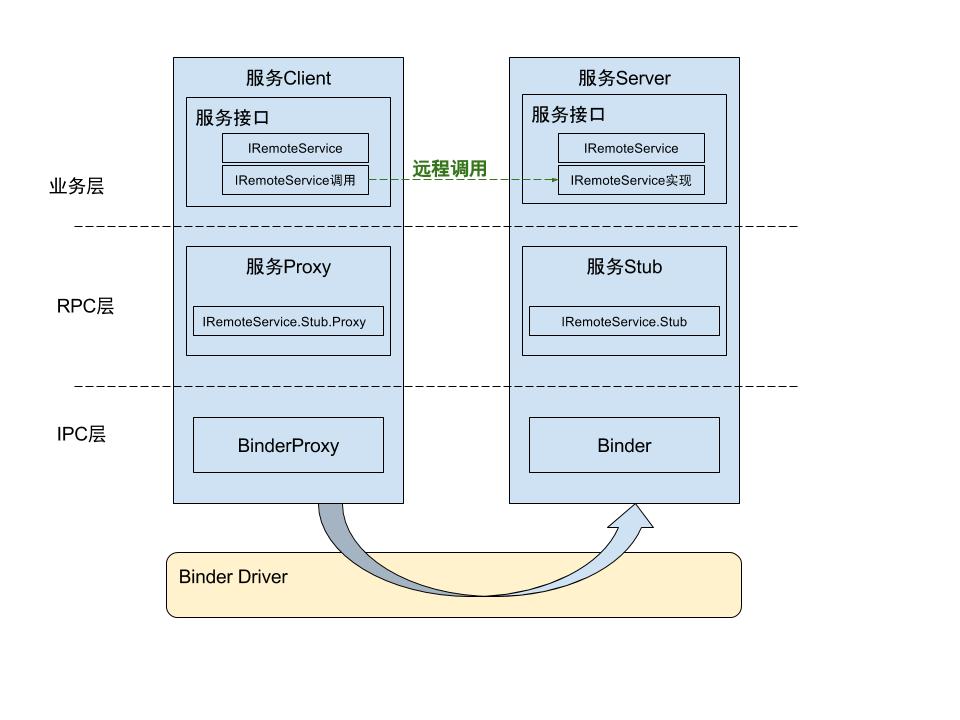
四. proxy 客户端与 Stub 服务端交互--AIDL 机制
1)aidl 自动生成的代码文件
package com.binderdemo;
public interface IRemoteService extends android.os.IInterface {
// ================ 静态的 Stub 类,是服务端的类 ================
// 服务端需要继承实现
public static abstract class Stub extends android.os.Binder implements com.binderdemo.IRemoteService {
private static final java.lang.String DESCRIPTOR = "com.binderdemo.IRemoteService";
/**
* Stub构造函数
*/
public Stub() {
this.attachInterface(this, DESCRIPTOR);
}
// ================ 客户端调用的接口:asInterface ================
// IRemoteService.Stub.Proxy(obj)
// 1. obj 可以通过 ServiceManager.getService("XX") 获取
// 2. obj 也可以通过 onServiceConnected ,system进程回调给用户进程获取
public static com.binderdemo.IRemoteService asInterface(android.os.IBinder obj) {
if ((obj == null)) {
return null;
}
android.os.IInterface iin = obj.queryLocalInterface(DESCRIPTOR);
if (((iin != null) && (iin instanceof com.binderdemo.IRemoteService))) {
return ((com.binderdemo.IRemoteService) iin);
}
return new com.binderdemo.IRemoteService.Stub.Proxy(obj);
}
@Override
public android.os.IBinder asBinder() {
return this;
}
@Override
public boolean onTransact(int code, android.os.Parcel data, android.os.Parcel reply, int flags) throws android.os.RemoteException {
switch (code) {
case INTERFACE_TRANSACTION: {
reply.writeString(DESCRIPTOR);
return true;
}
case TRANSACTION_getPid: {
data.enforceInterface(DESCRIPTOR);
int _result = this.getPid();
reply.writeNoException();
reply.writeInt(_result);
return true;
}
case TRANSACTION_getMyData: {
data.enforceInterface(DESCRIPTOR);
com.binderdemo.MyData _result = this.getMyData();
reply.writeNoException();
if ((_result != null)) {
reply.writeInt(1);
_result.writeToParcel(reply, android.os.Parcelable.PARCELABLE_WRITE_RETURN_VALUE);
} else {
reply.writeInt(0);
}
return true;
}
}
return super.onTransact(code, data, reply, flags);
}
// ================ 静态的 Proxy 类,是客户端调用的类 ================
private static class Proxy implements com.binderdemo.IRemoteService {
private android.os.IBinder mRemote;
/**
* Proxy构造函数
*/
Proxy(android.os.IBinder remote) {
mRemote = remote;
}
@Override
public android.os.IBinder asBinder() {
return mRemote;
}
public java.lang.String getInterfaceDescriptor() {
return DESCRIPTOR;
}
@Override
public int getPid() throws android.os.RemoteException {
android.os.Parcel _data = android.os.Parcel.obtain();
android.os.Parcel _reply = android.os.Parcel.obtain();
int _result;
try {
_data.writeInterfaceToken(DESCRIPTOR);
mRemote.transact(Stub.TRANSACTION_getPid, _data, _reply, 0);
_reply.readException();
_result = _reply.readInt();
} finally {
_reply.recycle();
_data.recycle();
}
return _result;
}
@Override
public com.binderdemo.MyData getMyData() throws android.os.RemoteException {
android.os.Parcel _data = android.os.Parcel.obtain();
android.os.Parcel _reply = android.os.Parcel.obtain();
com.binderdemo.MyData _result;
try {
_data.writeInterfaceToken(DESCRIPTOR);
mRemote.transact(Stub.TRANSACTION_getMyData, _data, _reply, 0);
_reply.readException();
if ((0 != _reply.readInt())) {
_result = com.binderdemo.MyData.CREATOR.createFromParcel(_reply);
} else {
_result = null;
}
} finally {
_reply.recycle();
_data.recycle();
}
return _result;
}
}
static final int TRANSACTION_getPid = (android.os.IBinder.FIRST_CALL_TRANSACTION + 0);
static final int TRANSACTION_getMyData = (android.os.IBinder.FIRST_CALL_TRANSACTION + 1);
}
public int getPid() throws android.os.RemoteException;
public com.binderdemo.MyData getMyData() throws android.os.RemoteException;
}使用的方法,客户端和服务器端
- 客户端
private void bindRemoteService(){
Log.i(TAG, "[ClientActivity] bindRemoteService");
Intent intent = new Intent(ClientActivity.this, RemoteService.class);
intent.setAction(IRemoteService.class.getName());
// 去绑定服务
bindService(intent, mConnection, Context.BIND_AUTO_CREATE);
====回调====
private ServiceConnection mConnection = new ServiceConnection() {
// system 系统进程去回调
@Override
public void onServiceConnected(ComponentName name, IBinder service) {
// 设置 service
mRemoteService = IRemoteService.Stub.asInterface(service);
String pidInfo = null;
try {
MyData myData = mRemoteService.getMyData();
pidInfo = "pid="+ mRemoteService.getPid() +
", data1 = "+ myData.getData1() +
", data2="+ myData.getData2();- 服务器端
public class RemoteService extends Service {
private static final String TAG = "BinderSimple";
MyData mMyData;
// 返回给客户端的对象
@Override
public IBinder onBind(Intent intent) {
Log.i(TAG,"[RemoteService] onBind");
return mBinder;
}
// 实现服务端的方法
/** * 实现IRemoteService.aidl中定义的方法 */
private final IRemoteService.Stub mBinder = new IRemoteService.Stub() {
@Override
public int getPid() throws RemoteException {
Log.i(TAG,"[RemoteService] getPid()="+android.os.Process.myPid());
return android.os.Process.myPid();
}
@Override
public MyData getMyData() throws RemoteException {
Log.i(TAG,"[RemoteService] getMyData() "+ mMyData.toString());
return mMyData;
}
/**此处可用于权限拦截**/
@Override
public boolean onTransact(int code, Parcel data, Parcel reply, int flags) throws RemoteException {
return super.onTransact(code, data, reply, flags);
}
};2). bindService 回调 ServiceConnection的 onServiceConnected 方法
bindService 会走到如下流程去绑定服务:
/frameworks/base/services/core/java/com/android/server/am/ActiveServices.java
int bindServiceLocked(IApplicationThread caller, IBinder token, Intent service,
String resolvedType, final IServiceConnection connection, int flags,
String instanceName, String callingPackage, final int userId)
throws TransactionTooLargeException {
。。。。。。
// 赋值给 ServiceRecord 对象
ServiceLookupResult res =
retrieveServiceLocked(service, instanceName, resolvedType, callingPackage,
callingPid, callingUid, userId, true,
callerFg, isBindExternal, allowInstant);
ServiceRecord s = res.record;
========创建 ServiceRecord 对象========
r = new ServiceRecord(mAm, className, name, definingPackageName,
definingUid, filter, sInfo, callingFromFg, res);
res.setService(r);
=-==========
requestServiceBindingsLocked --> requestServiceBindingLockedrequestServiceBindingLocked
private final boolean requestServiceBindingLocked(ServiceRecord r, IntentBindRecord i,
boolean execInFg, boolean rebind) throws TransactionTooLargeException {
if (r.app == null || r.app.getThread() == null) {
// If service is not currently running, can't yet bind.
return false;
}
if (DEBUG_SERVICE) Slog.d(TAG_SERVICE, "requestBind " + i + ": requested=" + i.requested
+ " rebind=" + rebind);
if ((!i.requested || rebind) && i.apps.size() > 0) {
try {
bumpServiceExecutingLocked(r, execInFg, "bind",
OomAdjuster.OOM_ADJ_REASON_BIND_SERVICE);
// r.app.getThread() 是 IApplicationThread ,又回到了应用进程
r.app.getThread().scheduleBindService(r, i.intent.getIntent(), rebind,
r.app.mState.getReportedProcState());
if (!rebind) {
i.requested = true;
}
i.hasBound = true;
i.doRebind = false;在应用进程的主线程操作
/frameworks/base/core/java/android/app/ActivityThread.java
public final void scheduleBindService(IBinder token, Intent intent,
boolean rebind, int processState) {
updateProcessState(processState, false);
BindServiceData s = new BindServiceData();
s.token = token;
s.intent = intent;
s.rebind = rebind;
if (DEBUG_SERVICE)
Slog.v(TAG, "scheduleBindService token=" + token + " intent=" + intent + " uid="
+ Binder.getCallingUid() + " pid=" + Binder.getCallingPid());
sendMessage(H.BIND_SERVICE, s);
}
===============
private void handleBindService(BindServiceData data) {
CreateServiceData createData = mServicesData.get(data.token);
// 1)获取到 service 对象
Service s = mServices.get(data.token);
if (DEBUG_SERVICE)
Slog.v(TAG, "handleBindService s=" + s + " rebind=" + data.rebind);
if (s != null) {
try {
data.intent.setExtrasClassLoader(s.getClassLoader());
data.intent.prepareToEnterProcess(isProtectedComponent(createData.info),
s.getAttributionSource());
try {
if (!data.rebind) {
// 2)调用 RemoteService 的 onBind 方法
IBinder binder = s.onBind(data.intent);
/// 3)将返回的服务器的binder 对象传给客户端
ActivityManager.getService().publishService(
data.token, data.intent, binder);
} else {
s.onRebind(data.intent);
ActivityManager.getService().serviceDoneExecuting(
data.token, SERVICE_DONE_EXECUTING_ANON, 0, 0);
}
} catch (RemoteException ex) {
throw ex.rethrowFromSystemServer();
}
} catch (Exception e) {
if (!mInstrumentation.onException(s, e)) {
throw new RuntimeException(
"Unable to bind to service " + s
+ " with " + data.intent + ": " + e.toString(), e);
}
}
}
}
=====1)获取到 service 对象 是通过反射来获取到对象 =====
private void handleCreateService(CreateServiceData data) {
。。。
// 反射创建 RemoteService 对象
service = packageInfo.getAppFactory()
.instantiateService(cl, data.info.name, data.intent);
。。。。。。。
service.attach(context, this, data.info.name, data.token, app,
ActivityManager.getService());
service.onCreate();
mServicesData.put(data.token, data);
mServices.put(data.token, service);// 2)调用服务器端的 RemoteService 的 onBind 返回 new IRemoteService.Stub 对象
IBinder binder = s.onBind(data.intent);
当该服务被绑定的时候,Binder 驱动会为根据该服务所在的进程决定 是返回本地对象还是代理对象给客户端。
- 当 Service 与 客户端位于同一个进程当中的时候,onServiceConnected 返回 Binder 本地对象——即 mBinder 对象给客户端;
- 当 Service 运行在不同进程中的时候,返回的是 BinderProxy 对象。
public class RemoteService extends Service {
private static final String TAG = "BinderSimple";
@Override
public IBinder onBind(Intent intent) {
Log.i(TAG,"[RemoteService] onBind");
return mBinder;
}
/** * 实现IRemoteService.aidl中定义的方法 */
private final IRemoteService.Stub mBinder = new IRemoteService.Stub() {调用 Stub 的构造方法
public interface IRemoteService extends android.os.IInterface {
// Stub 继承了 Binder 对象
public static abstract class Stub extends android.os.Binder implements com.binderdemo.IRemoteService {
private static final java.lang.String DESCRIPTOR = "com.binderdemo.IRemoteService";
/**
* Stub构造函数
*/
public Stub() {
this.attachInterface(this, DESCRIPTOR);
}/frameworks/base/core/java/android/os/Binder.java
public void attachInterface(@Nullable IInterface owner, @Nullable String descriptor) {
mOwner = owner;
mDescriptor = descriptor;
}
// 查询远端对象
public @Nullable IInterface queryLocalInterface(@NonNull String descriptor) {
if (mDescriptor != null && mDescriptor.equals(descriptor)) {
return mOwner;
}
return null;
}
在不同进程时候,BinderProxy 返回时空
/frameworks/base/core/java/android/os/BinderProxy.java
public IInterface queryLocalInterface(String descriptor) {
return null;
}=========猜测不同进程返回的是 BinderProxy =========
调用onbind 是在客户端进程,所以也会进行binder 通信,会涉及对象序列化
/frameworks/base/core/java/android/os/Parcel.java
public final IBinder readStrongBinder() {
return nativeReadStrongBinder(mNativePtr);
}
/frameworks/base/core/jni/android_os_Parcel.cpp
调用native 层的方法
{"nativeReadStrongBinder", "(J)Landroid/os/IBinder;", (void*)android_os_Parcel_readStrongBinder},
======
static jobject android_os_Parcel_readStrongBinder(JNIEnv* env, jclass clazz, jlong nativePtr)
{
Parcel* parcel = reinterpret_cast<Parcel*>(nativePtr);
if (parcel != NULL) {
// 调用 javaObjectForIBinder
// parcel->readStrongBinder() 传给 javaObjectForIBinder,所以驱动传来的对象可以和java 层对象互换
return javaObjectForIBinder(env, parcel->readStrongBinder());
}
return NULL;
}调用 javaObjectForIBinder
/frameworks/base/core/jni/android_util_Binder.cpp
jobject javaObjectForIBinder(JNIEnv* env, const sp<IBinder>& val)
{
// N.B. This function is called from a @FastNative JNI method, so don't take locks around
// calls to Java code or block the calling thread for a long time for any reason.
if (val == NULL) return NULL;
if (val->checkSubclass(&gBinderOffsets)) {
// It's a JavaBBinder created by ibinderForJavaObject. Already has Java object.
jobject object = static_cast<JavaBBinder*>(val.get())->object();
LOGDEATH("objectForBinder %p: it's our own %p!\n", val.get(), object);
return object;
}
// 创建 BinderProxyNativeData
BinderProxyNativeData* nativeData = new BinderProxyNativeData();
nativeData->mOrgue = new DeathRecipientList;
// mObject 保存 val 指针
nativeData->mObject = val;
// native 创建 BinderProxy对象
// 参数为 BinderProxyNativeData 和 val
jobject object = env->CallStaticObjectMethod(gBinderProxyOffsets.mClass,
gBinderProxyOffsets.mGetInstance, (jlong) nativeData, (jlong) val.get());
if (env->ExceptionCheck()) {
// In the exception case, getInstance still took ownership of nativeData.
return NULL;
}
BinderProxyNativeData* actualNativeData = getBPNativeData(env, object);
if (actualNativeData == nativeData) {
// Created a new Proxy
uint32_t numProxies = gNumProxies.fetch_add(1, std::memory_order_relaxed);
uint32_t numLastWarned = gProxiesWarned.load(std::memory_order_relaxed);
if (numProxies >= numLastWarned + PROXY_WARN_INTERVAL) {
// Multiple threads can get here, make sure only one of them gets to
// update the warn counter.
if (gProxiesWarned.compare_exchange_strong(numLastWarned,
numLastWarned + PROXY_WARN_INTERVAL, std::memory_order_relaxed)) {
ALOGW("Unexpectedly many live BinderProxies: %d\n", numProxies);
}
}
} else {
delete nativeData;
}
// 返回 BinderProxy对象
return object;
}/frameworks/base/core/java/android/os/BinderProxy.java
private static BinderProxy getInstance(long nativeData, long iBinder) {
BinderProxy result;
synchronized (sProxyMap) {
try {
result = sProxyMap.get(iBinder);
if (result != null) {
return result;
}
// 创建 BinderProxy 对象
result = new BinderProxy(nativeData);
} catch (Throwable e) {
// We're throwing an exception (probably OOME); don't drop nativeData.
NativeAllocationRegistry.applyFreeFunction(NoImagePreloadHolder.sNativeFinalizer,
nativeData);
throw e;
}
NoImagePreloadHolder.sRegistry.registerNativeAllocation(result, nativeData);
// The registry now owns nativeData, even if registration threw an exception.
sProxyMap.set(iBinder, result);
}
return result;
}// 3)将返回的服务器的binder 对象传给客户端
/frameworks/base/services/core/java/com/android/server/am/ActiveServices.java
void publishServiceLocked(ServiceRecord r, Intent intent, IBinder service) {
final long origId = Binder.clearCallingIdentity();
....
ArrayMap<IBinder, ArrayList<ConnectionRecord>> connections = r.getConnections();
for (int conni = connections.size() - 1; conni >= 0; conni--) {
ArrayList<ConnectionRecord> clist = connections.valueAt(conni);
for (int i=0; i<clist.size(); i++) {
ConnectionRecord c = clist.get(i);
try {
// c.conn 是前面传进来的,为 InnerConnection
// service 是服务端返回的对象
c.conn.connected(r.name, service, false);/frameworks/base/core/java/android/app/LoadedApk.java
private static class InnerConnection extends IServiceConnection.Stub {
@UnsupportedAppUsage(maxTargetSdk = Build.VERSION_CODES.R, trackingBug = 170729553)
final WeakReference<LoadedApk.ServiceDispatcher> mDispatcher;
InnerConnection(LoadedApk.ServiceDispatcher sd) {
mDispatcher = new WeakReference<LoadedApk.ServiceDispatcher>(sd);
}
public void connected(ComponentName name, IBinder service, boolean dead)
throws RemoteException {
LoadedApk.ServiceDispatcher sd = mDispatcher.get();
if (sd != null) {
sd.connected(name, service, dead);
}
}
}
=========
// 调用了 getServiceDispatcherCommon,传入的是应用进程的主线程handler【在 ContextImpl 的bindService】
public void connected(ComponentName name, IBinder service, boolean dead) {
if (mActivityExecutor != null) {
mActivityExecutor.execute(new RunConnection(name, service, 0, dead));
} else if (mActivityThread != null) {
// mActivityThread 是handler 对象,让其在子线程去执行
mActivityThread.post(new RunConnection(name, service, 0, dead)); private final class RunConnection implements Runnable {
RunConnection(ComponentName name, IBinder service, int command, boolean dead) {
mName = name;
mService = service;
mCommand = command;
mDead = dead;
}
public void run() {
if (mCommand == 0) {
doConnected(mName, mService, mDead);
} else if (mCommand == 1) {
doDeath(mName, mService);
}
}
======================
public void doConnected(ComponentName name, IBinder service, boolean dead) {
ServiceDispatcher.ConnectionInfo old;
ServiceDispatcher.ConnectionInfo info;
synchronized (this) {
if (mForgotten) {
// We unbound before receiving the connection; ignore
// any connection received.
return;
}
old = mActiveConnections.get(name);
if (old != null && old.binder == service) {
// Huh, already have this one. Oh well!
return;
}
if (service != null) {
// A new service is being connected... set it all up.
info = new ConnectionInfo();
info.binder = service;
info.deathMonitor = new DeathMonitor(name, service);
try {
service.linkToDeath(info.deathMonitor, 0);
mActiveConnections.put(name, info);
} catch (RemoteException e) {
// This service was dead before we got it... just
// don't do anything with it.
mActiveConnections.remove(name);
return;
}
} else {
// The named service is being disconnected... clean up.
mActiveConnections.remove(name);
}
if (old != null) {
old.binder.unlinkToDeath(old.deathMonitor, 0);
}
}
// If there was an old service, it is now disconnected.
if (old != null) {
mConnection.onServiceDisconnected(name);
}
if (dead) {
mConnection.onBindingDied(name);
} else {
// If there is a new viable service, it is now connected.
if (service != null) {
// 回调 onServiceConnected 方法,将服务器端的 binder 对象给到客户端
// mConnection在创建 ServiceDispatcher 对象是有赋值,是 new ServiceConnection
mConnection.onServiceConnected(name, service);
} else {
// The binding machinery worked, but the remote returned null from onBind().
mConnection.onNullBinding(name);
}
}
}
到客户端,设置 mRemoteService = IRemoteService.Stub.asInterface(service)
private ServiceConnection mConnection = new ServiceConnection() {
@Override
public void onServiceConnected(ComponentName name, IBinder service) {
mRemoteService = IRemoteService.Stub.asInterface(service);
=========
public interface IRemoteService extends android.os.IInterface {
public static abstract class Stub extends android.os.Binder implements com.binderdemo.IRemoteService {
private static final java.lang.String DESCRIPTOR = "com.binderdemo.IRemoteService";
/**
* Stub构造函数
*/
public Stub() {
this.attachInterface(this, DESCRIPTOR);
}
/**
* 将IBinder 转换为IRemoteService interface
*/
// obj 是服务器端返回的 RemoteService 对象
public static com.binderdemo.IRemoteService asInterface(android.os.IBinder obj) {
if ((obj == null)) {
return null;
}
// 看是不是同一个进程
android.os.IInterface iin = obj.queryLocalInterface(DESCRIPTOR);
if (((iin != null) && (iin instanceof com.binderdemo.IRemoteService))) {
return ((com.binderdemo.IRemoteService) iin);
}
// 包装一下这个 obj
return new com.binderdemo.IRemoteService.Stub.Proxy(obj);
}// 包装一下这个 obj
private static class Proxy implements com.binderdemo.IRemoteService {
private android.os.IBinder mRemote;
/**
* Proxy构造函数
*/
Proxy(android.os.IBinder remote) {
mRemote = remote;
}
// 通过 asBinder 接口就可以获取这个对象了
@Override
public android.os.IBinder asBinder() {
return mRemote;
}IRemoteService.Stub.asInterface(service) 调用服务端的方法
如调用 getMyData() 方法
先看下 asInterface 方法:
public static com.binderdemo.IRemoteService asInterface(android.os.IBinder obj) {
if ((obj == null)) {
return null;
}
android.os.IInterface iin = obj.queryLocalInterface(DESCRIPTOR);
if (((iin != null) && (iin instanceof com.binderdemo.IRemoteService))) {
return ((com.binderdemo.IRemoteService) iin);
}
// 由于是 不同进程,则用 Proxy 包装这个 obj,obj 由上面分析是 BinderProxy
return new com.binderdemo.IRemoteService.Stub.Proxy(obj);
}
// ================ 静态的 Proxy 类 ================
private static class Proxy implements com.binderdemo.IRemoteService {
private android.os.IBinder mRemote;
/**
* Proxy构造函数 设置 mRemote 为 BinderProxy
*/
Proxy(android.os.IBinder remote) {
mRemote = remote;
}
@Override
public int getPid() throws android.os.RemoteException {
android.os.Parcel _data = android.os.Parcel.obtain();
android.os.Parcel _reply = android.os.Parcel.obtain();
int _result;
try {
_data.writeInterfaceToken(DESCRIPTOR);
// 调用 BinderProxy 的 transact 方法
mRemote.transact(Stub.TRANSACTION_getPid, _data, _reply, 0);
// _reply 是服务端传过来的值
_reply.readException();
_result = _reply.readInt();
} finally {
_reply.recycle();
_data.recycle();
}
return _result;
}asInterface作为 BinderProxy的代理接口,调用了 BinderProxy 的 transact 方法。最终会调用到服务端的类,该类继承了静态的 Stub 类,实现了 onTransact方法。
从AIDL到内核,一次完整的Binder通信 - 掘金
借助 AIDL 理解 Android Binder 机制——Binder 来龙去脉 - 知乎
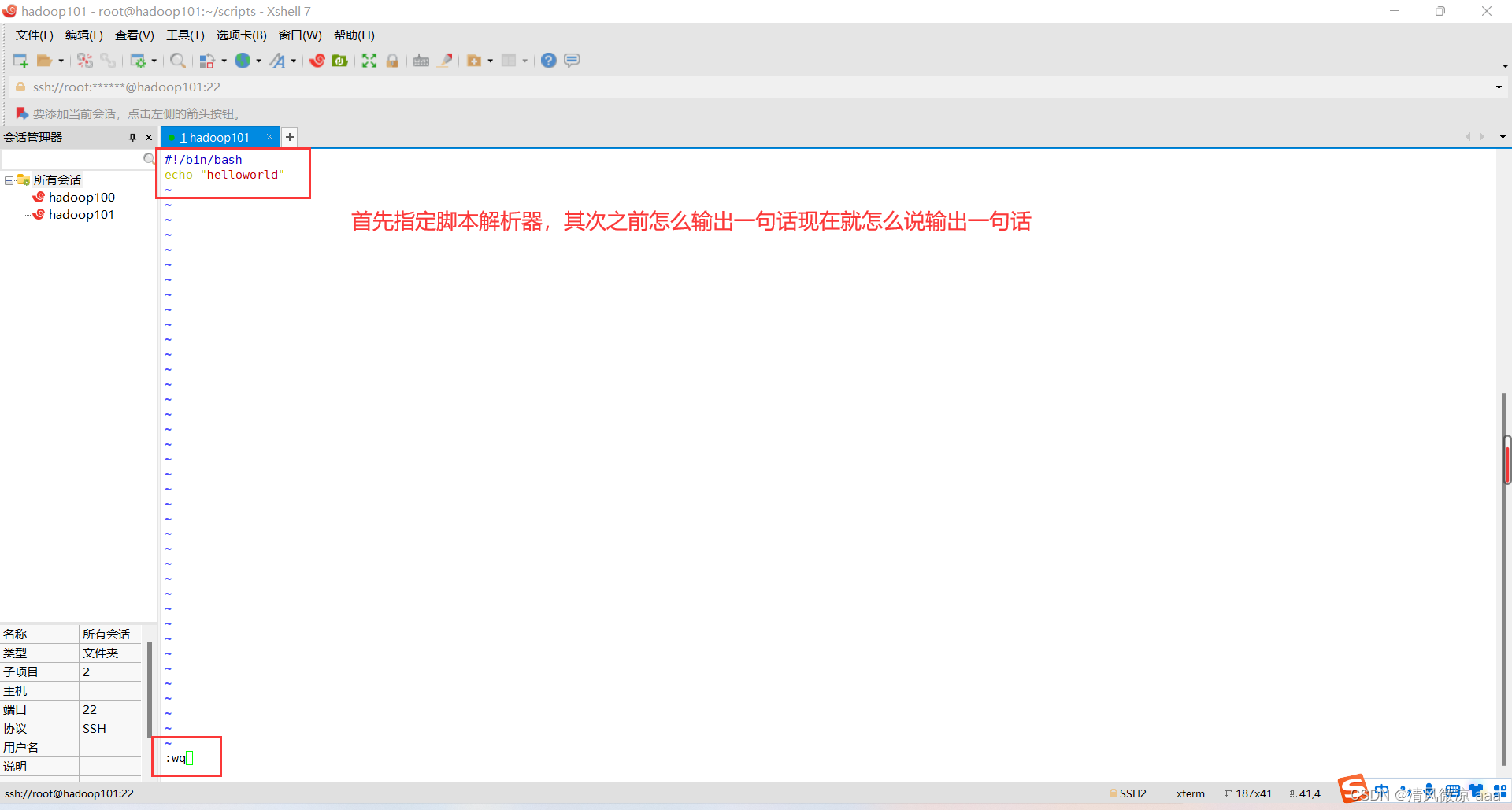



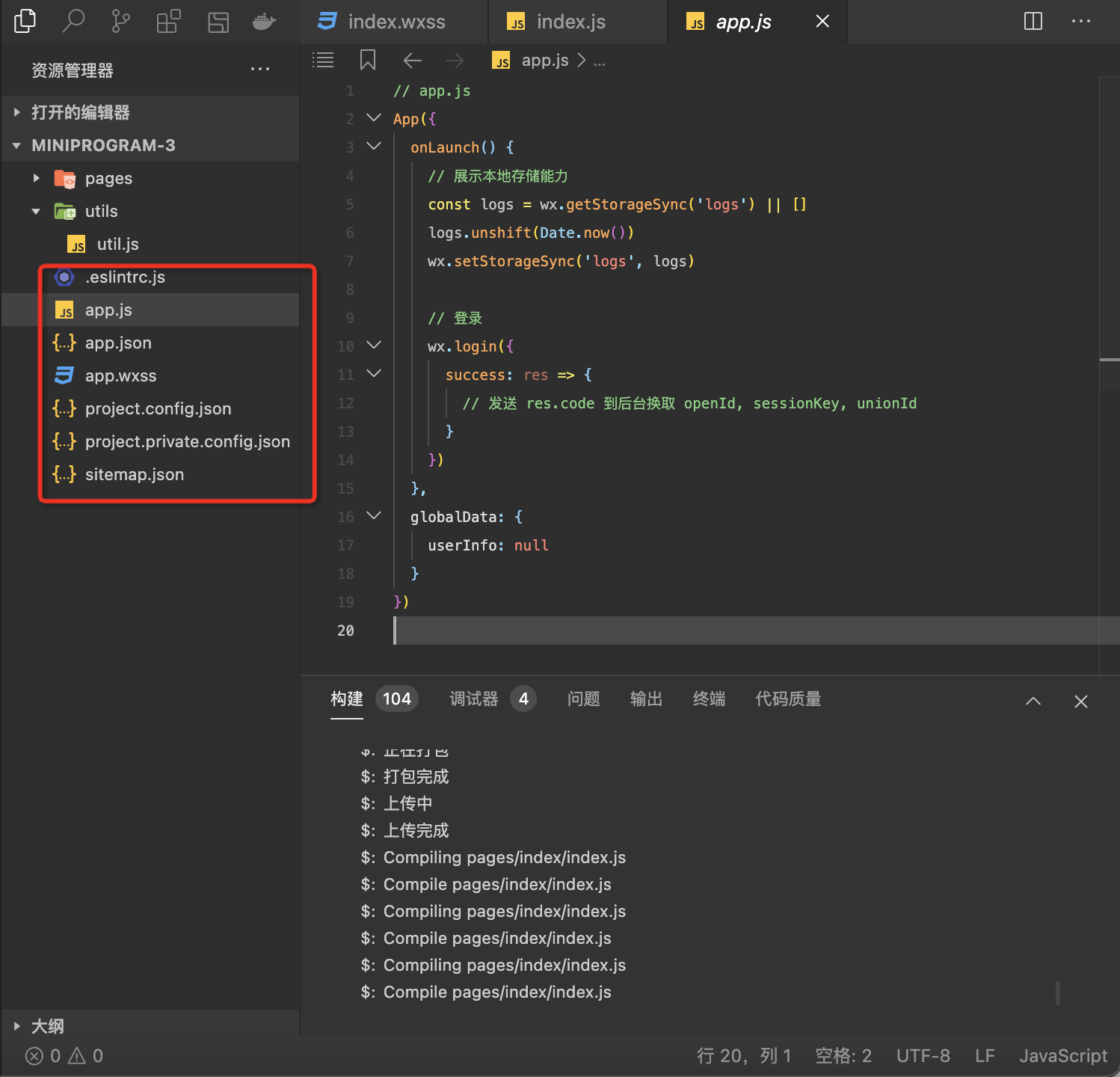


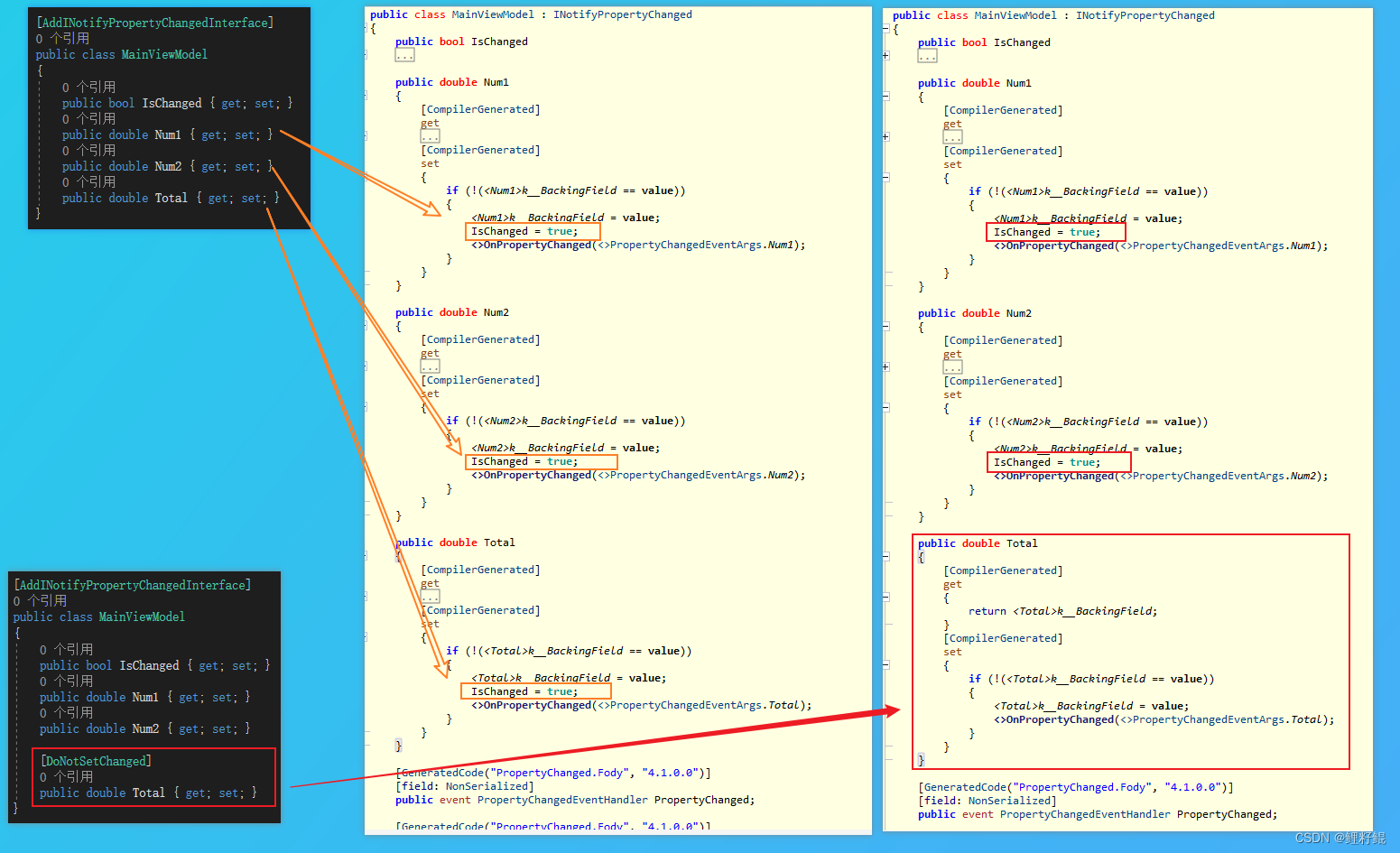

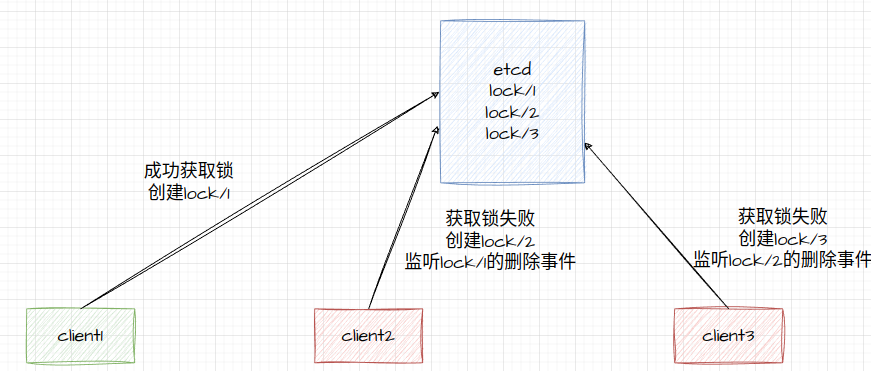
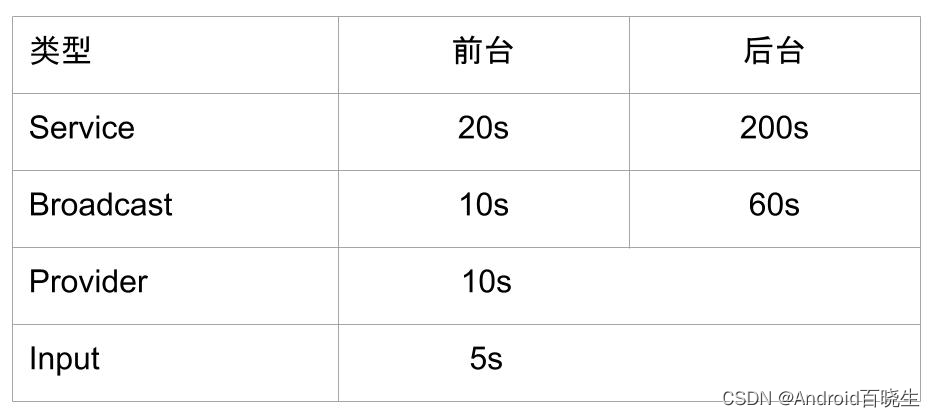

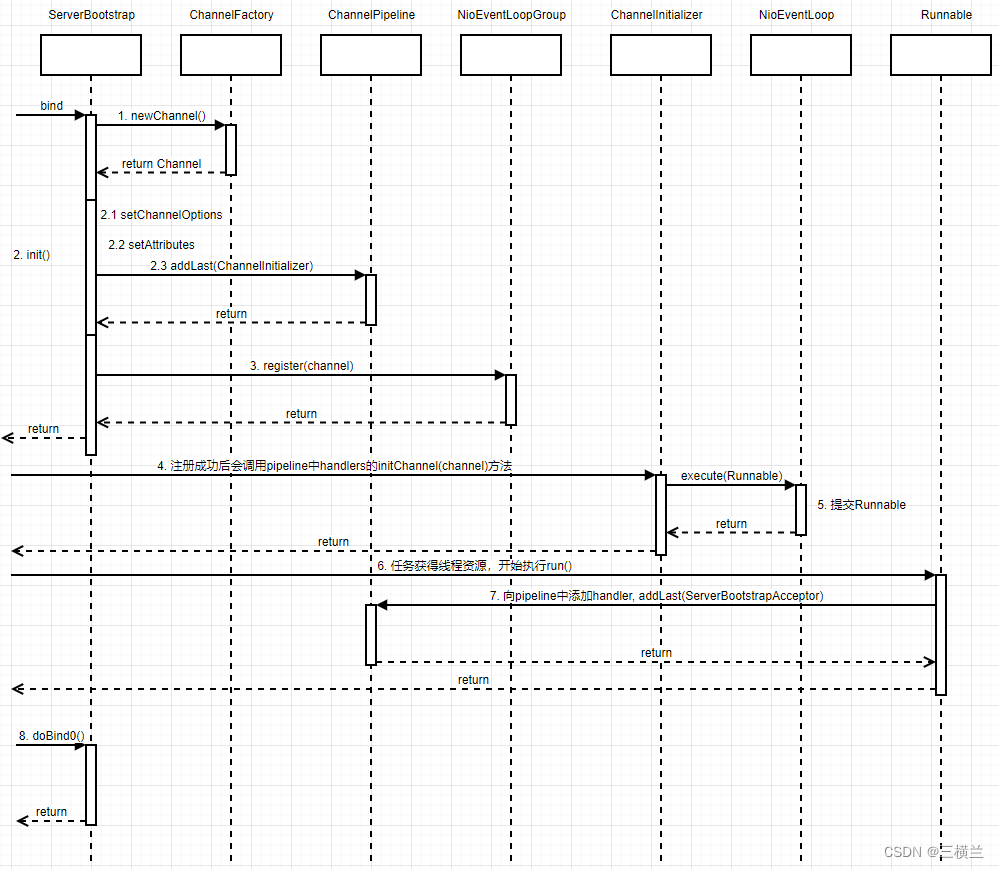

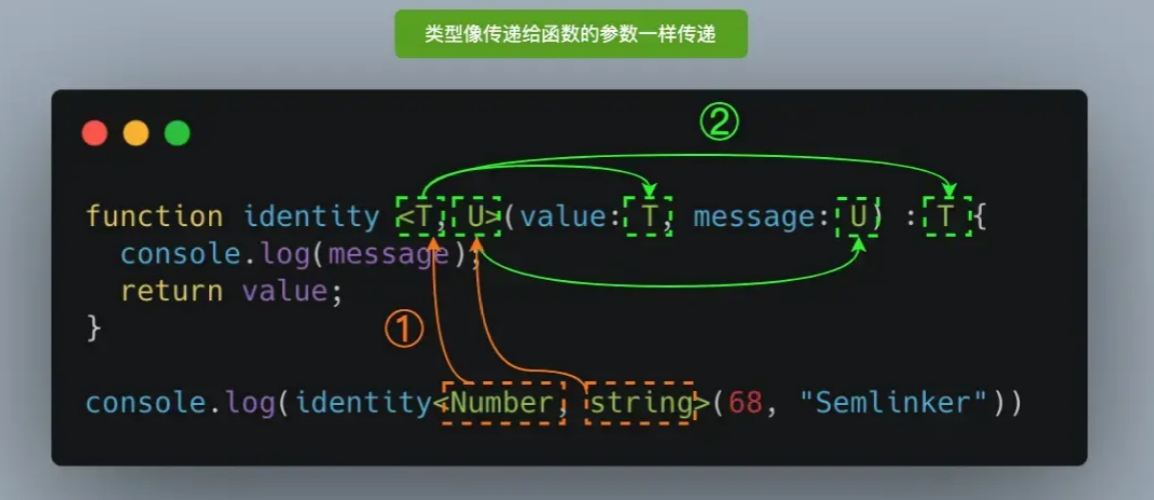

![[Linux] 动态 / 静态库的生成与使用](https://img-blog.csdnimg.cn/59a5f24d2c13419fa62422456f5b64b3.png)
